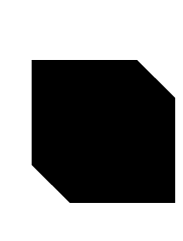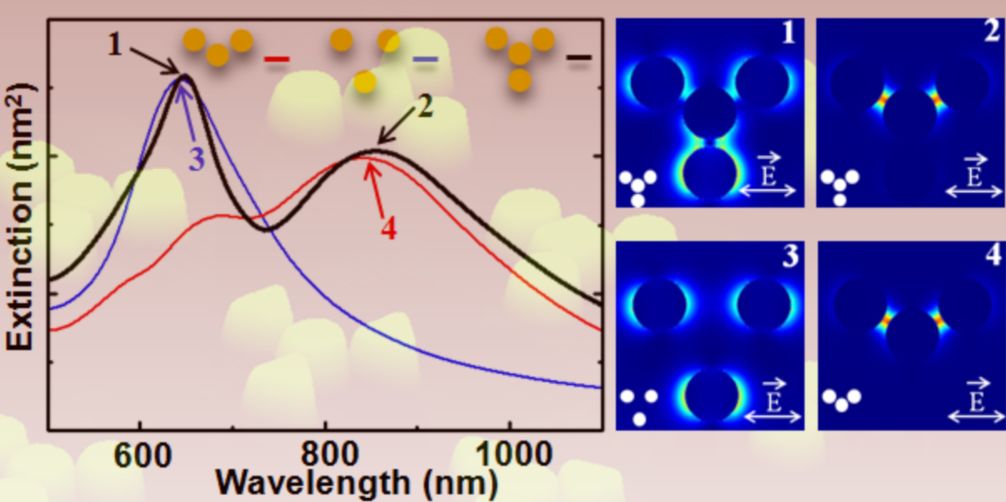 前言
前言
新加坡工程院院士、新加坡国立大学洪明辉教授根据自己团队多年的科研论文写作经验、审稿经验,特别加入了他学生的体会,归纳了如下超级实用的写作指南,手把手地教同学们打造高影响力的SCI论文。
这不仅是一份论文写作指导,也是科研工作的指南。

Part 1.如何高效地开展一个科研项目?
做科研是一个迭代过程
不要指望你的实验或计算以从A点到B点的方式直线进行。
“I found that I often had to go back to check my experimental results or equations when things go wrong. Failure is non-optional. In my opinion, the tenacity a research student gains during his or her research, in terms of being able to hang on to a problem and not let go, is probably the greatest value-add of a research degree.”
它取决于你要问的问题
为每个研究项目提出一个主要问题,例如 “how does x change when y …”。
“The question you ask will lead you in drastically different directions. For example, in considering sensing problems one can ask the questions ‘how has the analyte concentration changed?’ or ‘what are the substances present in the system?’.”
不断地平衡项目的目标和实际的限制
试着将整个项目从头到尾形象化、可视化,记下每一步所需的设备和需要完成的小目标。
“There’s no point in making beautiful samples if you cannot characterize them. For my spoof plasmon sensing project, I remember that I had to get the terahertz spectrometer working before I even started.”
紧盯目标
永远不要脱离目标或背景做研究。研究背景让你的研究有意义。在你的领域里,你准备解决哪些重大问题?这决定了你工作的新颖性和影响力。当你过于聚焦于手头工作时,有时候会忘记当初为什么要开展这个项目。
这是一个迭代过程
在上述步骤之间来回转换,以完善你的想法。有时候甚至需要质疑你的假设。

Part 2.如何写出一篇好的科研论文?
首先我们都知道,写好科研论文不是一件容易的事情。不断练习、好的计划以及有条理的记录是科研论文写作的三大法宝。
1.写论文的通用准则
1)论文不是实验报告
这是你打算与世界分享你的工作的最重要的时刻,不必把所得到的每一个图、表、数据全放进去。没有新想法的论文,即使出版了,也毫无用处。
“I find myself treating a paper like a presentation. I ask myself, ‘what are the 3 things that I want to tell people?’ Not 20, 10 or 5 things. Just 3.”
2)论文的组织架构直接取决于各部分间的逻辑联系
像剥洋葱一样,一层一层地展示结果。
每次跳转到下一节前,需要适当的原因解释来引导读者,以让读者对你接下来提出的任何新信息做好接受的准备。
3)不要过度加工或解读图表
清晰(Clarity)最重要。
•To make your paper readable;
•To stay focused on the paper research topic;
•To use paragraphs to separate each important point;
•To present your points in a logical order;
•To avoid informal wording.
2.写作开始前,列出恰当的论文计划
(paper plan)
论文计划中要明确论文的目标(objective), 创新点(novelty)和影响力(impact)。
1)Highly dependent on target journals
• Letter, article or review papers;
• Low, middle or high impact journals;
• Mostly theoretical journal (like PRL) or experimental Journal (like OE).
2)Must be like a story: all parts must be coherent and connected.
3)Must answer a scientific question:
• A claim that answers the question;
• Evidence data;
• Reasoning that involves a “rule” or scientific principle that describes why theevidence supports the claim.
3.论文结构
Title(题目)
一句话描述该研究的关键创新点和影响力。
• Normally 15 words;
• Brief (short & sharp) phrase describing and reflecting the contents of the paper;
• Concise and informative;
• Avoid abbreviations, prepositions and formulae where possible.
Abstract(摘要)
用一段话简明扼要地总结你的研究工作。
• Purpose of the study – hypothesis, overall question and objective;
• Scope of the experiments and methodology;
• Major results and findings, including specific and key data;
• Important conclusions (with research limitations and implications (if applicable).
提示和技巧:
• To stand on its own, not refer to figure or table in the paper;
• To focus on summarizing results;
• To be consistent with what you will report in the paper;
• Avoid words like: highest, best, first, it is the record (unless it is a Nature or Science paper);
• Highlight impact on society, policy and future work.

Introduction(引言)
基本要求:
•Normally 1~1.5 pages;
•Provides insights to current or past problems;
•Provides comprehensive literature reviewAt least 15~20 references cited with most current literatures;
•To describe the importance (significance) of the study;
•To defend your model, organism or system with the advantages;
•To provide a rationale. State your specific hypothesis or objective, and describe the reasons that led you to select them;
•Objective must appear in the last paragraph.
提示和技巧:
•To use past tense except when referring to established facts;
•To organize your ideas, making one major point in one paragraph;
•All major relevant papers must be cited;
•To present background information only as needed;
•To state the hypothesis and objective precisely and clearly;
•To ensure correct spelling, clarity & appropriateness of the sentences and phases;
•Never directly deny pervious published results.
Materials and Methods(材料与方法)
此部分应尽量简明。
风格:
•To use the third person passive voice;
•To use normal prose in this and other sections of the paper;
•To avoid informal lists and use complete sentences;
•Materials and methods are not a set of instructions;
•No explanatory information, which is for the discussion.
Results(结果)
发现与结果的展示,并能与讨论部分相结合。
内容:
•To summarize the findings in text, illustrate with figures & tables;
•To describe the results to the observations that are most relevant.
提示和技巧:
•To explain clearly;
•Never to include raw data or intermediate calculations;
•Do not present the same data more than once.
风格:
•To use past tense for your results, and put them in a logical order;
•To place figures and tables, being properly numbered.

I do not know where to go,
but I have been on the road.
我不知道将去何方,但我已在路上
Figure designs(图片设计)
全局考虑,将相关联的数据(例如,模拟和实验)放在一起。
•Always check the format of published papers in target journals: Is it better to design vertical, horizontal or square figures?
•Figure captions: sharp and sweet: meanwhile, all presented data must be quoted.
Discussion(讨论)
对结果进行解释,并且阐明该结果如何支持你的结论。清晰地描述你的发现的重要性。
•To decide if each hypothesis is supported, rejected, or if you cannot make a decision with confidence;
•Research papers are not accepted if the work is incomplete. Draw what conclusions you can have based upon your results and treat the study as a finished work;
•You may suggest future research directions;
•To explain your observations as much as possible, focusing on mechanisms;
•The experimental design adequately addressed the hypothesis;
•To offer alternative explanations.
Conclusions(结论)
对该研究的总结,但是应避免与摘要和引言重复。
应该包含:
•Study objectives;
•Study practical and implications;
•How the paper advances research in this area? What is unique?
•Recommendations for future works.
Acknowledgement(致谢)
致谢是对那些有贡献于该研究的个人或基金的公开认可和感谢。
•Contributions to the research should be acknowledged.
•Non‐research contributions are not appropriate for acknowledgment.
A Graphic for the Table of Contents (TOC):
许多高影响力的期刊会要求作者提供 TOC图片。
要求:
1. Be in conjunction with the manuscript title;
2. Give the reader a summary of the research described in the paper.
提示和技巧:
1. Straight forward and easy to be understood;
2. Colourful and eye-catching;
3. Highlight the main message of the paper;
4. Minimum (most important) scientific data.
Good examples:

ACS Nano, 7 (12), 11138–11146 (2013)

Nano Letters, 12 (4), 2101-2106 (2012)

Part 3: 个人经验分享
一些非常有用的建议:
1) Work hard and smart;
2) Keep reading and writing. Everyday read and write each for two hours;
3) Keep improving, if your manuscript is rejected, analyze reviewers’comments, revise, update your research results at once and submit the revised manuscript to another journal ASAP;
4) Think bigger pictures and aim at higher impact;
5) Have more research partners at different research fields and build a more extensive research network;
6) Weekly report and weekly seminar;
7) To have more discussion with your supervisor (at least once a week);
8) To mainly read papers being published in top ~ 10 journals in your field;
9) To challenge the published papers and find out their weakness and what need to be done but have not been done;
10) To keep in your mind that Great papers often come from ‘stupid’ ideas;
11) To extend knowledge scope and think wider scope, higher impact and deeper scientific understanding;
12) To attend more interest seminars and seek as many as possible helps to do together with others for the top impact papers;
13) To have your 5 years plan, 2 years plan, one year plan, half year plan,quarterly plan, monthly plan, weekly plan, and daily plan;
14) To review and tune your plans often;
15) To record data properly and process data ASAP after experiment;
16) To record down what are revised by your supervisors, seniors and manuscript reviewers.

嘉宾简介

洪明辉院士,新加坡国立大学终身正教授,新加坡工程院院士,激光光学领域的著名学者和领军人物,曾担任新加坡国立大学工学院助理院长,长期从事激光微纳加工及检测技术的研究。在Nature及其子刊, Chemical Reviews, Nano Letters,Advanced Materials,ACS Nano等国际一流学术刊物发表论文400余篇,合著15部专著;现为美国光学学会会士(OSA Fellow)、国际光学工程学会会士(SPIE Fellow),国际光子和激光工程学会会士(IAPLE Fellow)和副主席,以及新加坡工程师协会会士和副主席。担任《光电工程》和Opto-Electronic Advances的执行主编,同时担任Light: Science & Applications, Scientific Reports, Journal of Laser Micro/nanoengineering, 《中国科学: 物理学力学天文学》等高水平学术期刊编委。
END
版权声明
转载来自:本文内容来自洪明辉院士相关讲座报告,光电期刊微信公众号整理,如需转载请留言。
往期精选
青年千人|“千人计划”申报攻略之青年人才篇
“春晖杯”落幕 | 又一批追梦者在这里实现理想,我们明年再会!
“学联杯”体育节落幕|恰同学少年,风华正茂;书生意气,挥斥方遒!
科研岗位、学术同仁、合作平台?学联高层次人才中心为您牵线搭桥!
感谢您对学联长期以来的支持和关心
长按图片即可扫描二维码关注我们
